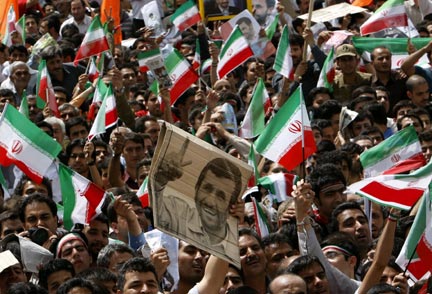Iran
Iran looks ahead to presidential vote
Article published on the 2009-06-10 Latest update 2009-06-10 13:03 TU

Iranians react as President Mahmoud Ahmadinejad addresses supporters in Tehran on June 10, 2009
(Photo: Reuters/Ahmed Jadallah)
A total of 475 Iranians, including 42 women, registered as prospective candidates but only four were allowed to stand. They are the current President, Mahmoud Ahmadinejad, moderate ex-prime minister Mir-Hossein Mousavi, former parliamentary speaker Mehdi Karroubi and conservative Mohsen Rezai.
Seventy-two-year-old cleric Karroubi notably criticised Ahmadinejad for having dismissed the Holocaust as a myth. He also ran in the 2005 elections. Rezai, who was the head of the Revolutionary Guards for 16 years until 1997, is also a critic of Ahmadinejad and promised to tackle poverty and unemployment.
But it appears the next president is likely to be either Ahmadinejad or 68-year-old Mousavi who, in the 1980s, was the last man to hold the post of Prime Minister.
Ahmadinejad, 52, was a surprise winner of the 2005 election, and if he is defeated this time around, it will be the first time a sitting president hasn’t won a second term.
His time in office has seen Iran become marginalised on the international stage because of its uranium enrichment programme and his anti-western outbursts.
The three other candidates have also criticised him for his handling of the economy. Critics say his big-spending policies have done little to reduce unemployment and poverty and have instead increased inflation, which is currently at 24 percent.
Of the 46.2 million people eligible to vote on Friday, half of whom were born after the 1979 Islamic revolution. If no candidate emerges with 50 per cent plus one vote in the first round, a run-off will be held on June 19.
Whoever wins, however, will still have to answer to Iran’s supreme leader Ayatollah Ali Khamenei.







